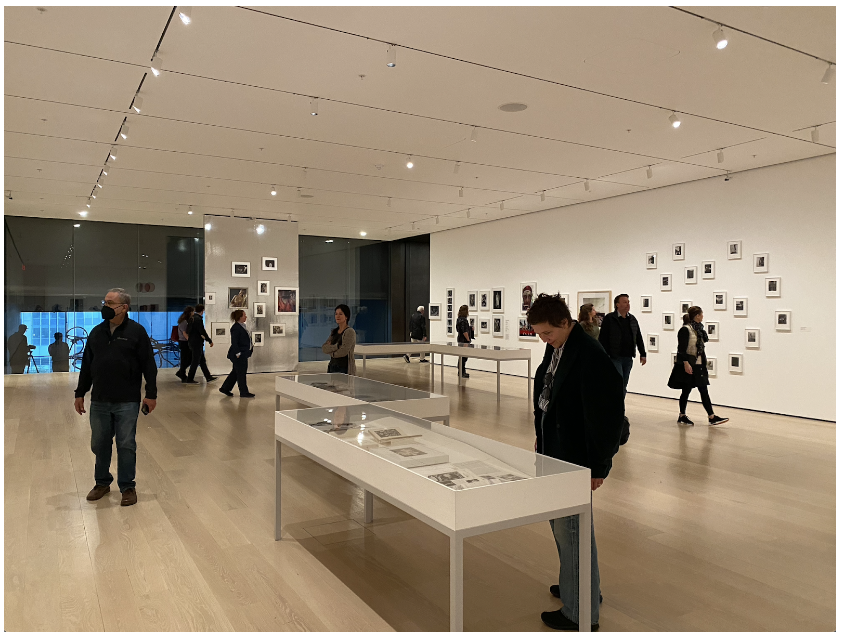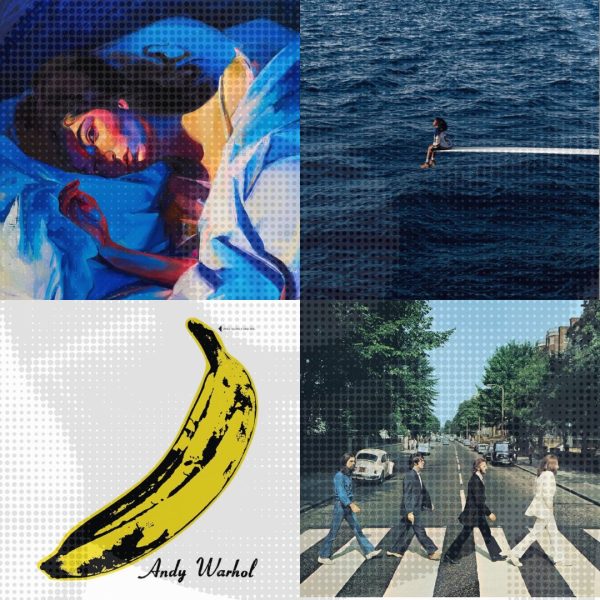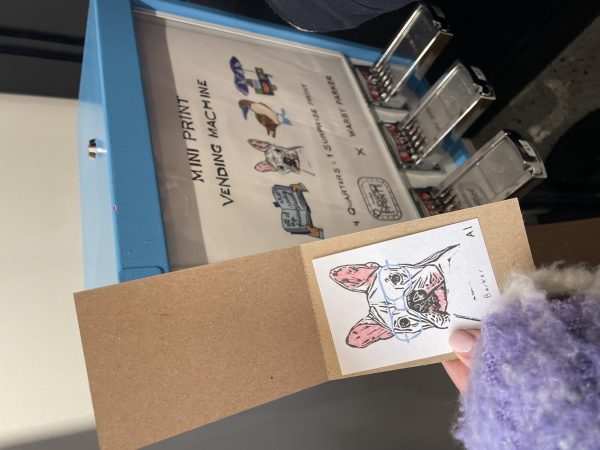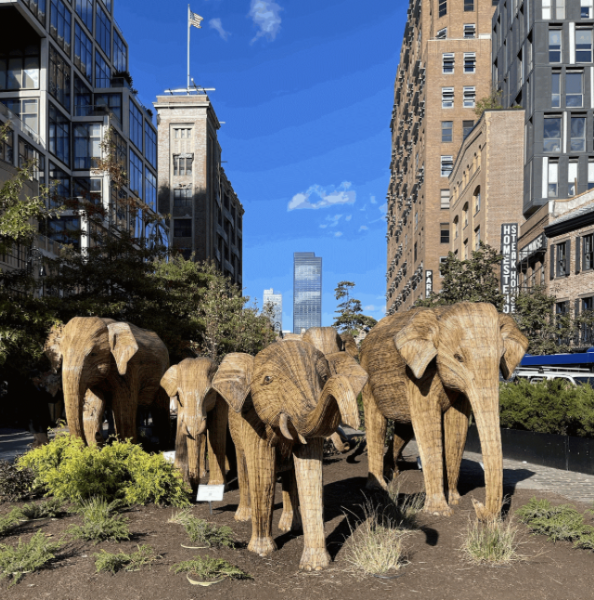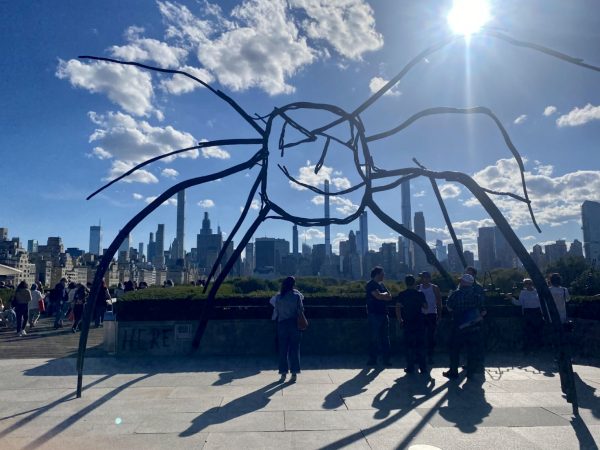“Our Selves”: Womanhood That Spans Genres and Generations
In a room laden with the scent of sandalwood perfume and carved out of the hallway connecting galleries devoted to Monet and Picasso, was the exhibition “Our Selves: Photographs by Women Artists from Helen Kornblum.”
The physical display of the photography exhibition, which ran at the Museum of Modern Art from April 16 and closed just this past Monday, was understated: no dramatic lighting or intricate layout, just canvases on crisp, blank walls. But the display of pictures spoke volumes, portraying a world more interesting and contradictory than any physical design could have adequately conveyed.
“Our Selves” featured 90 photographs shot by women from a variety of disciplines, including photojournalism, portraiture and advertising. In view of, and in dialogue with each other, the works, spanning over a hundred years, “rreframe[d] restrictive notions of womanhood, exploring the connections between photography, feminism, civil rights, Indigenous sovereignty and queer liberation.”
Of the exhibition, senior curator Roxana Marcoci says it “is very much conceived in the present-tense.” She explains that “Our Selves” is an opportunity to “consider the ways in which women artists, often operating on the margins of dominant cultures, have rethought and reimagined artistic and social practices within the modern and contemporary worlds.”
All the photographs displayed as a part of “Our Selves” depicted a quiet intensity, and demanded its viewers to consider them not just as beautiful works hanging on a wall, but as relating to our modern understanding of intersectional feminism and womanhood. The plaque marking the entrance to the exhibition asked, “How have women artists used photography as a tool of resistance? As a way of unsettling established narratives? As a means of unfixing the canon?”
A partial answer to those lofty questions is that women photographers have engaged in reflection as a way of understanding our world, and consequently how to shatter it and remake it. One of the photographs in the exhibition that encapsulates such vision is Carrie Mae Weems’ “Untitled (Woman and daughter with makeup).” In this photograph, not only is the young girl mirroring her mother’s action of carefully applying lipstick while gazing in their vanity mirrors, but it is a reflection of how our society keeps re-entrenching gender roles by teaching them to younger generations. It is also a critique of our penchant for thinking of larger society as the sole Big Bad: Sometimes constraints of self-expression are taught to us by the ones we love most.
Another photo that sparked introspection and consideration of our modern understanding of womanhood is Cara Romero’s piece in her “First American Girl” series titled “Wakeah.” The photograph is meant to counter “overgeneralized pop-culture representations of Native Americans” and assert “the creative power of Native Women,” read the placard beside the photo. “Wakeah” reminded me of the American Girl Doll brand, which seemed to be the point, but also of the memes that dominated social media this summer. While those memes were meant to be comically self-aware and not incite any deep discussion, they did promote an unconscious, if surface-level, exploration of what exactly it looks like and means to be a modern and realistic “American girl.” “Our Selves” is a more serious contemplation of that question, as Marcoci believes that the photography collection is an opportunity to “affirm equity and diversity of voices.”
While there were many affecting works on display, the photograph that elicited the most visceral reaction from me was “American Girl in Italy” by Ruth Orkin. “Our Selves” was an exhibition designed to spark dialogues that span time and space, and what is more universal to the experience of womanhood than being catcalled and leered at by men on the street? “American Girl in Italy” has a palpable resonance with contemporary viewers; though the photo was taken in 1951, the current of misogyny and objectification is still active today, as more than a hundred male university students in Spain leaned out their dorm windows and catcalled female passersby.
To answer the questions posed above, “how do we use photography as a tool of resistance?,” recognition of cross-cultural and cross-generational shared experiences is also a part of the path forward.
“Our Selves” was not the first to consider the meaning of “womanhood.” Yet, it is a reminder of our responsibility to continue that conversation by looking at the art of the past and the present, as well as by looking at ourselves.
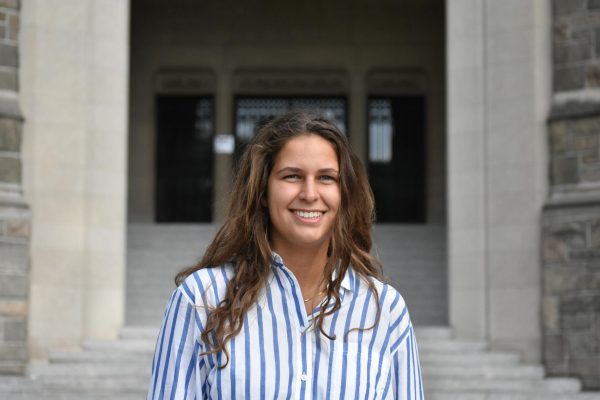
Nicole Braun is a senior from Saddle River, N.J. and she is thrilled to be a member of Volume 105! Her love for writing and editing led her to begin writing...



































































































































































































